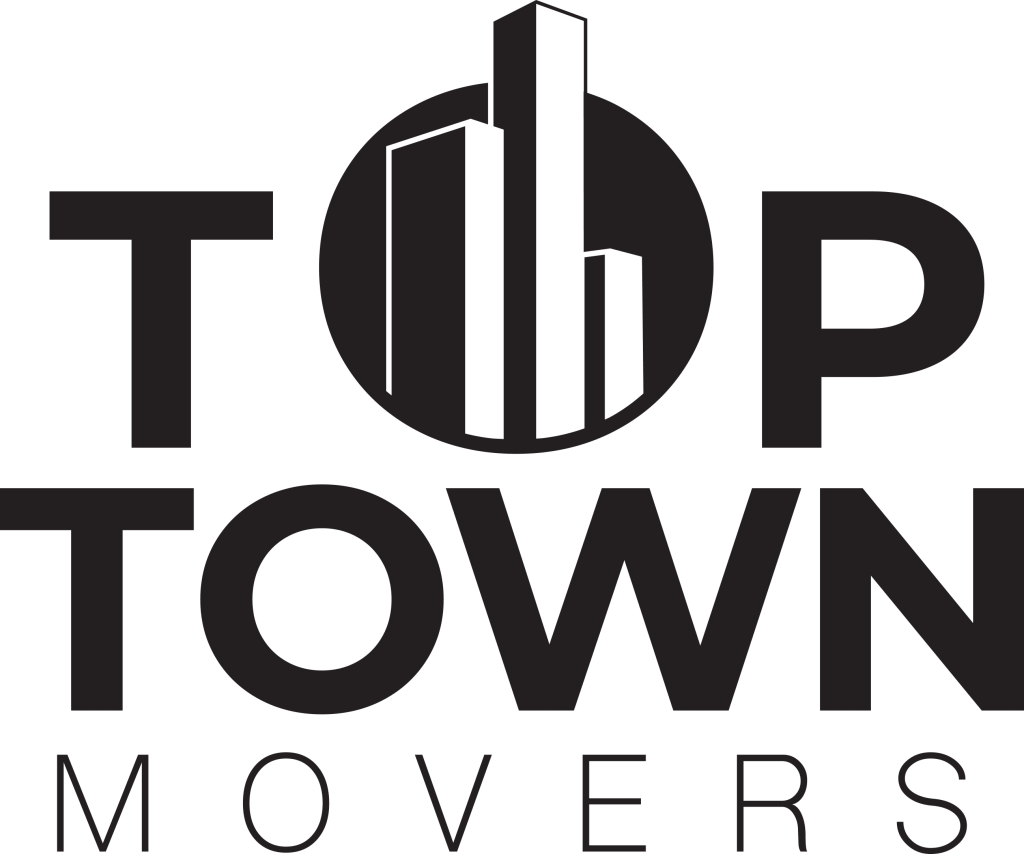Moving to a new home is an adventure, a fresh start filled with the promise of new experiences and opportunities. When that move is a long distance one, spanning across provinces or even the country, the excitement can be accompanied by a significant amount of stress. The sheer number of tasks to coordinate can feel overwhelming. This is where a detailed plan becomes your most valuable asset. A comprehensive relocation checklist for a long move is not just a list of things to do; it’s a roadmap that guides you from the initial decision to the moment you’re settled into your new home, ensuring no detail is overlooked.
At Top Town Movers, we’ve managed countless long haul moves for families and individuals in North York and across Ontario. We understand the complexities involved. That’s why we’ve created this ultimate long distance move checklist. This guide is designed to break down the process into manageable, time-based steps. Following this long haul moving timeline will help you stay organized, reduce stress, and ensure your transition is as smooth and efficient as possible. Think of this as your personal interprovincial move planner, your companion for the journey ahead.
- Learn More >>>>10 Tips for Moving With Kids Without a Hitch
Eight Weeks Before Your Move: The Foundation of a Smooth Relocation
The key to a successful long distance move is starting early. With two months to go, you have ample time to lay the groundwork without feeling rushed. This is the strategic planning phase, where you’ll make the big decisions that will shape the rest of your move.
Create a Moving Budget
First and foremost, you need to understand the financial scope of your move. A long distance relocation involves more than just the cost of movers. Your budget should account for:
- Professional Mover Fees: This will be your largest expense. It includes transportation, labor, fuel surcharges, and any additional services like packing or storage.
- Packing Supplies: If you plan to pack yourself, you’ll need boxes, tape, bubble wrap, packing paper, and markers.
- Insurance: Your moving company will offer basic liability coverage, but you may want to purchase additional insurance for full value protection of your belongings.
- Travel Costs: Factor in flights or fuel for your vehicle, accommodation along the way, and meals during your journey to the new home.
- Storage: You might need temporary storage if your new home isn’t ready when your belongings arrive.
- New Home Expenses: Include security deposits, utility setup fees, and any immediate repairs or purchases needed for your new residence.
- Contingency Fund: Always set aside 10-15% of your total budget for unexpected costs.

- Learn More >>>>Common moving mistakes you have to avoid !
Research and Book a Moving Company
This is arguably the most critical decision you’ll make. Don’t settle for the first quote you receive. You need a reliable, reputable company, especially for a move across the country.
- Get Multiple Quotes: Contact at least three different moving companies. For those in the Greater Toronto Area, a search for movers in North York or Ontario will yield many options. Ensure the companies provide in-home or virtual estimates for the most accurate pricing. An estimate given over the phone without seeing your items is a red flag.
- Check Credentials: Verify the company’s credentials. Are they licensed and insured? Check their reviews on trusted platforms like Google, Yelp, or the Better Business Bureau. A long-standing history of positive feedback is a good sign.
- Understand the Quote: A quote for a long distance move is typically based on the weight of your shipment and the distance it’s traveling. Make sure the estimate is a “binding” or “not to exceed” quote, which protects you from unexpected price hikes on moving day. Ask what is included and what services cost extra.
- Ask Questions: Inquire about their process for long distance moves. How do they handle potential delays? Who is your point of contact during the move? What is their policy on fragile or high-value items? Once you’ve chosen your mover, like Top Town Movers, book your date and get a written confirmation.
Create a Moving Binder or Digital Folder
Organization is everything. Designate a physical binder or a digital folder on a cloud service like Google Drive or Dropbox to keep all your move-related documents in one place. This moving across the country checklist file should contain:
- Estimates and contracts from moving companies.
- Your moving budget and a spreadsheet to track expenses.
- An inventory list of your belongings.
- Receipts for any moving-related purchases.
- Important contacts, including your moving company coordinator, real estate agents, and new utility providers.
Begin the Decluttering Process
The less you have to move, the lower your costs will be. Moving is the perfect opportunity to purge items you no longer need or want. Go through your home room by room. Sort items into four categories: keep, sell, donate, and discard.
- Sell: High-value items can be sold online through platforms like Facebook Marketplace or Kijiji. A garage sale is another great option.
- Donate: Gently used clothing, furniture, and household goods can be donated to local charities in your area.
- Discard: Arrange for disposal of items that can’t be sold or donated, keeping local recycling and waste disposal guidelines in mind.
- Learn More >>>>Compare moving company
Six Weeks Before Your Move: Gathering Momentum
With the foundation set, it’s time to start tackling the more tangible aspects of your move. The six-week mark is about preparation and logistics.
Order Packing Supplies
If you are doing some or all of the packing yourself, now is the time to gather your materials. You will need more supplies than you think. A general list includes:
- A variety of box sizes (small for heavy items like books, large for light items like linens).
- Specialty boxes (wardrobe boxes for clothes, dish packs for kitchenware).
- Packing tape and a dispenser.
- Packing paper and bubble wrap for fragile items.
- Labels or permanent markers for clear labeling.
- Scissors and a box cutter.
Start Packing Non-Essentials
You can begin packing items you don’t use daily. This proactive approach will save you from a frantic packing rush in the final week. Good candidates for early packing include:
- Out-of-season clothing and shoes.
- Books, CDs, and DVDs.
- Guest room linens and decor.
- Special occasion dishes and cookware.
- Artwork and decorative items. As you pack, create a detailed inventory list. Number each box and record its contents and the room it belongs to. This system is a lifesaver during unpacking.
Notify Schools and Arrange for Records Transfer
If you have children, this is a crucial step. Visit their current school to notify them of the move and sign any necessary paperwork to have their academic records transferred to their new school. Research and register them in their new school district as soon as you have your new address.
Plan Your Food Inventory
Start a conscious effort to use up the food in your pantry, refrigerator, and freezer. Perishable items and open containers cannot be transported by the movers. Create a meal plan for the upcoming weeks that incorporates these items to minimize waste and save money.

- Learn More >>>>Average cost of moving boxes
Four Weeks Before Your Move: The One-Month Countdown
With one month to go, the reality of the move begins to set in. This phase of your comprehensive moving list focuses on administrative tasks and confirming logistics.
Confirm Details with Your Mover
Circle back with your moving company. Confirm the moving date, arrival time, and the specific services you’ve contracted for. Provide them with both your current and new addresses and exchange emergency contact numbers. This is also a good time to ask any lingering questions you may have about the moving day process.
File a Change of Address
This is a critical step to ensure you don’t miss any important mail. You can file a change of address with Canada Post online. This will forward your mail to your new address for a specified period, giving you time to update your information directly with various organizations.
Notify Important Parties
Make a list of everyone who needs your new address. This is more than just friends and family. Your cross-country moving guide should include notifying:
- Financial Institutions: Banks, credit card companies, and investment firms.
- Government Agencies: Canada Revenue Agency (CRA), provincial health care provider, Elections Canada, and your provincial driver’s licensing body.
- Insurance Providers: Home, auto, life, and medical insurance companies. Your auto insurance rates may change based on your new location.
- Subscriptions and Memberships: Magazines, newspapers, streaming services, and gym memberships.
- Online Shopping Accounts: Update your shipping address on sites like Amazon.
Arrange for Utility Connections and Disconnections
Contact your current utility providers to schedule a disconnection date for the day after you move out. Then, contact the utility providers in your new city to arrange for services to be connected either the day you arrive or the day before. This includes:
- Electricity
- Gas or Oil
- Water
- Internet and Cable
- Phone
- Waste and Recycling Services
Make Your Personal Travel Arrangements
If you are flying, book your flights and arrange for transportation from the airport. If you are driving, plan your route. Book pet-friendly hotels if necessary and schedule any vehicle maintenance to ensure your car is ready for a long trip. Don’t forget to make arrangements for your pets’ travel, including checking airline requirements or ensuring they will be comfortable and safe in the car.
- Learn More >>>>Moving Short Distance
Two Weeks Before Your Move: Nearing the Finish Line
The pressure is on, but because you started early, this period should be about execution rather than panic. Your focus now is on packing and finalizing last-minute details.
Accelerate Your Packing
Your goal should be to have the majority of your home packed by the end of this week. Work through your home one room at a time. As you label boxes, be specific. Instead of just “Kitchen,” write “Kitchen – Pots and Pans” or “Kitchen – Everyday Dishes.” This makes unpacking much more systematic. Set aside items that are valuable or sentimental to transport with you personally.
Service Your Vehicle
If you’re driving to your new home, take your car in for a full service. Get an oil change, check the tires, brakes, and fluid levels. A long distance drive is not the time for a breakdown.
Arrange for Time Off Work
Confirm your time off from work for the days surrounding your move. You’ll want at least a day or two before the move for final preparations and a few days after to get settled in without the pressure of work.
Reconfirm Child and Pet Care
If you have young children or pets, moving day can be chaotic and even dangerous for them. Reconfirm arrangements for them to stay with a friend, family member, or at a daycare facility for the duration of moving day.
- Learn More >>>>How To Move To a New Town
One Week Before Your Move: The Final Preparations
This is the final stretch. Your home is likely full of boxes, and your to-do list is getting shorter. This week is about tying up loose ends and preparing for the big day itself.
Pack an “Essentials” Box
This is one of the most important parts of any relocation checklist for a long move. This box will contain everything you need for your first 24-48 hours in your new home before the main unpacking begins. It should travel with you, not on the moving truck. Essentials include:
- Basic toiletries and a change of clothes for everyone.
- Medications and a first-aid kit.
- A tool kit with a screwdriver, hammer, and box cutter.
- Paper towels, toilet paper, and all-purpose cleaner.
- Plates, cups, and utensils for a first meal.
- Coffee maker and coffee (a true essential for many).
- Phone and laptop chargers.
- Important documents from your moving binder.
- Comfort items for children, like a favorite toy or blanket.
Finish Packing and Labeling
Complete all remaining packing. Do not leave anything for moving day. Ensure every box is taped securely and clearly labeled. Defrost your refrigerator and freezer at least 24 hours before the move to allow them to dry out completely.
Final Confirmation with Movers
Make one last call to your moving company. Confirm their arrival time and that they have the correct addresses and your cell phone number.
Prepare for Payment
Long distance movers typically require payment upon delivery before they unload your belongings. Confirm the accepted payment methods (certified cheque, credit card, e-transfer) and have the payment ready. It’s also a good idea to have some cash on hand for tipping the moving crew for their hard work.
Refill Prescriptions
Ensure you have at least a month’s supply of any necessary medications for your family and pets. It may take some time to find a new doctor or pharmacy in your new city.

- Learn More >>>>Moving Timeline Checklist
Moving Day: Execution and Oversight
The day has finally arrived. Your job today is to supervise and facilitate, ensuring the plan you’ve worked so hard on is executed properly.
Be Present and Available
Be on-site when the movers arrive. Your main role is to direct the crew and answer any questions they may have.
Protect Your Home
Make sure the movers lay down protective coverings for floors and pad banisters and door frames to prevent damage to the property you are leaving.
The Bill of Lading
Before the movers start loading, you will sign a bill of lading. This is the legal contract between you and the moving company. Read it carefully. It should list the services provided, the estimated cost, the delivery destination, and the inventory of items being moved. Do not sign it if there are blank sections or you don’t agree with something. Keep your copy in a safe place.
Final Walkthrough
Once the truck is loaded, do one final, thorough walkthrough of your old home. Check every room, closet, and cabinet to ensure nothing has been left behind.
Provide Final Information
Give the truck driver your exact new address, directions if necessary, and your cell phone number. Confirm the estimated delivery window at your new home.
Arrival at Your New Home: Unpacking and Settling In
The journey is over, and you’ve arrived at your new home. The final phase of your Ontario long distance move plan is about receiving your belongings and starting the process of turning a new house into your home.
Supervise the Unloading
Be present when the moving truck arrives. Your job is to direct the movers on where to place furniture and boxes in each room. This will save you from having to move heavy items yourself later.
Check the Inventory
As items are brought into your home, check them off your inventory list. This is your chance to note if anything is missing or damaged.
Inspect for Damage
Examine your furniture and boxes for any signs of damage that may have occurred during transit. If you see any damage, note it on the driver’s copy of the bill of lading before signing it. Take pictures of the damage for your records. You have a limited time to file a claim, so it’s important to be thorough.
Pay the Movers
Once everything is unloaded, you will need to pay the driver as per your agreement. Remember to get a receipt.
Set Up the Essentials First
Before you dive into unpacking everything, focus on the basics. Assemble the beds first. After a long journey and a tiring day, you’ll be grateful for a proper place to sleep. Then, unpack your essentials box. This will allow you to have a shower, make a simple meal, and relax a little before tackling the mountain of boxes.
- Learn More >>>>Does moving affect credit score?
Begin Unpacking Systematically
Don’t try to unpack everything at once. Start with the most important rooms, like the kitchen and bathrooms. Unpack one box at a time, breaking it down and recycling it as you go to keep the clutter under control.
A long distance move is a marathon, not a sprint. This comprehensive moving list is designed to guide you through every leg of the race. By breaking it down week by week, the monumental task becomes a series of achievable steps. Remember to be flexible, as unexpected things can happen. But with careful planning and a positive attitude, your adventure to a new home will be a resounding success. For those planning a move from, to, or within Ontario, partnering with a trusted professional like Top Town Movers can make all the difference. We’re here to handle the heavy lifting, so you can focus on the exciting new chapter that awaits.

































